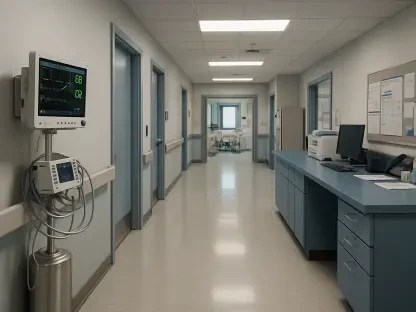The disparity in health outcomes for Medicare Advantage (MA) enrollees between Puerto Rico (PR) and the US mainland represents a critical challenge in the American health care system, demanding urgent scrutiny and action to address systemic inequities. Recent research spanning from 2010 to 2022 reveals stark differences in mortality rates among Hispanic MA enrollees in PR compared to both Hispanic and White enrollees across the US mainland, including Alaska and Hawaii. These gaps are not mere statistics but indicators of deeper systemic inequities shaped by federal policies, funding structures, and regional variations in care delivery. MA, as a privatized alternative to traditional Medicare, serves millions by offering affordable health insurance plans, yet the benefits and outcomes are far from uniform. This exploration seeks to unpack the reasons behind these disparities, examining how economic conditions, policy constraints, and resource allocation contribute to varying mortality rates. By delving into these issues, the aim is to foster a broader conversation about fairness and equity in health care access for all beneficiaries, regardless of geography.
Unveiling Enrollment Disparities
A profound difference in MA enrollment rates sets the stage for understanding health outcome disparities between PR and the US mainland. Over 90% of Medicare beneficiaries in PR opt for MA plans, a staggering contrast to the 54% enrollment rate seen across the mainland. This discrepancy is largely driven by economic realities in PR, where high poverty levels make traditional Medicare less viable due to the absence of low-income subsidies for Part D prescription drug coverage. MA plans, with their lower cost-sharing and supplemental benefits like out-of-pocket limits, become a more attractive option for residents struggling financially. However, this overwhelming reliance on privatized plans raises critical questions about whether such a system, shaped by economic necessity, inherently limits the quality of care provided to enrollees in PR compared to those in other regions.
Beyond economics, policy constraints further push PR residents toward MA plans in ways not seen on the mainland. Unlike their counterparts in other states, individuals in PR are not automatically enrolled in Medicare Part B, which covers outpatient services. This structural barrier, combined with limited access to certain benefits under traditional Medicare, funnels beneficiaries into MA as a more financially protective choice. Yet, this dependency might come with hidden costs, as the high enrollment rate does not necessarily translate to better health outcomes. Instead, it highlights a systemic issue where policy design and regional economic conditions create a health care landscape that may predispose PR enrollees to challenges in accessing comprehensive care, potentially contributing to the observed differences in mortality rates over time.
Funding Challenges and Care Quality
Funding disparities for MA plans between PR and the US mainland reveal a troubling inequity that likely impacts health outcomes. Benchmark payments to MA plans in PR are approximately 40% lower than those on the mainland, a significant shortfall that restricts the resources available for care delivery. This reduced funding often results in smaller provider networks, meaning fewer doctors and specialists are accessible to enrollees in PR. Additionally, the limited financial support can lead to constraints on the scope of services offered, potentially compromising the quality of care. When resources are scarce, patients may face barriers to receiving timely interventions or specialized treatments, which could directly influence higher mortality rates in PR compared to other areas with more robust funding structures.
The consequences of these financial limitations extend beyond mere numbers, affecting real lives through diminished access to essential health services. With fewer providers available, MA enrollees in PR might experience longer wait times for appointments or struggle to find specialists for complex conditions. Such delays can exacerbate health issues, turning manageable conditions into critical ones. Furthermore, the quality of care may suffer when plans operate under tight budgets, as there may be less investment in preventive measures or advanced medical technologies. This systemic underfunding not only highlights a policy oversight but also underscores a critical link between resource allocation and health outcomes, suggesting that addressing these financial disparities could be a vital step toward reducing the mortality gap for PR enrollees.
Analyzing Mortality Patterns
Examining mortality trends among MA enrollees reveals persistent disparities that demand attention. Between 2010 and 2022, Hispanic enrollees in PR consistently exhibited higher mortality rates than their Hispanic counterparts on the US mainland, although the gap narrowed from 0.85 percentage points to 0.33 over the period. This reduction indicates some progress, possibly due to incremental improvements in care delivery or external factors influencing health outcomes. Nevertheless, the enduring difference points to unresolved challenges in access to high-quality medical services and care coordination in PR. These statistics underscore the need to delve deeper into the structural issues within the MA program that perpetuate such disparities, even as slight advancements are made over time.
A contrasting dynamic emerges when comparing mortality rates between Hispanic enrollees in PR and White enrollees on the mainland. Initially, PR Hispanic enrollees had slightly higher mortality rates, but by 2022, this trend reversed, showing a lower rate by 0.59 percentage points. This shift introduces complexity into the analysis, suggesting that factors beyond geography, such as racial and ethnic health patterns or specific regional challenges on the mainland, also influence outcomes. It indicates that while PR faces unique systemic barriers, other demographic and contextual elements play a role in shaping mortality across different groups. This nuanced picture emphasizes that solutions to address health disparities must account for a broad spectrum of influences, rather than focusing solely on one region or population.
Systemic Implications and Future Directions
The differences in mortality rates among MA enrollees between PR and the US mainland reflect broader systemic issues within health care policy and delivery that cannot be ignored. Lower funding levels and reduced quality of care in PR stand out as probable contributors to the higher mortality observed among Hispanic enrollees there. However, the full scope of these disparities remains obscured by gaps in data regarding socioeconomic conditions and region-specific influences. Without comprehensive information, pinpointing the precise drivers of these outcomes remains challenging. This uncertainty highlights an urgent need for expanded research to uncover the underlying causes and to develop targeted interventions that can address these inequities effectively in the MA framework.
Looking ahead, the findings from past analyses between 2010 and 2022 call for actionable policy reforms to mitigate the disparities faced by PR enrollees. Increasing benchmark payments to MA plans in PR could bolster provider networks and enhance access to quality care, potentially narrowing the mortality gap. Additionally, addressing policy barriers, such as the lack of automatic Medicare Part B enrollment in PR, might offer beneficiaries more equitable choices in their health care plans. Future studies should also prioritize collecting detailed socioeconomic data to better understand how poverty and other factors intersect with health outcomes. By focusing on these steps, policymakers and researchers have begun to pave the way for a more just health care system that ensures better outcomes for all MA enrollees, regardless of their location.









